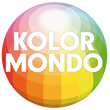In a world where visual storytelling reigns supreme, color has emerged as a powerful cultural currency. At the center of this movement is Pantone, a company that has transformed color — something seemingly intangible and abstract — into a global language. Though it might seem odd that a firm focused on standardizing color would gain such mainstream popularity, that’s exactly what Pantone has done. And it says a lot about how our culture now consumes, shares, and celebrates color.
· From Technical Tool to Cultural Icon
· Originally created to help designers and manufacturers ensure color consistency, Pantone was never meant to be a household name. Yet, in a visually driven digital era, its influence has grown far beyond the design world. Social media platforms, especially those built on imagery like Instagram and Pinterest, have given color a life of its own — and Pantone a new relevance.
· Pantone didn’t invent our desire for color. But it made it easier for the world to talk about it, by offering a shared visual vocabulary. Today, color isn’t just an aesthetic element — it’s a form of expression, identity, and even influence.
· The Color of the Year: A Snapshot of the Times
· Every December, the Pantone Color Institute unveils its Color of the Year, aiming to capture the emotional and cultural pulse of the moment through a single shade. The announcement generates a flurry of media coverage and inspires countless think pieces, trend reports, and consumer guides. From fashion to interior design, and even recipes everyone scrambles to incorporate the new hue.
· 
Take Ultra Violet (18-3838), for instance — a mystical purple selected for its associations with nonconformity, mindfulness, and a futuristic outlook. It wasn’t necessarily loved by all, but it got people talking — and that’s the point. More than a color, it became a conversation starter (yes, a Swedish art director once made an Ultra Violet smoothie).
· Trend-Spotting on a Global Scale
· Pantone’s trend forecasting isn’t done in a vacuum. Its team — a fluid network of experts rather than a fixed elite unit — spans the globe. From Paris to Shanghai, Melbourne to Buenos Aires, these specialists track color movements across industries: fashion, tech, homeware, even cars. They gather clues from everything around them, from fabric samples to streetwear, art installations, and more.
· Sometimes, Pantone validates an obvious trend, like Rose Quartz (13-1520) aligning with the popularity of “Millennial Pink.” Other times, it pushes the boundaries, choosing shades that aren’t widely embraced yet — making a statement rather than reflecting consensus.
· When Forecasts Become Reality
· At some point, Pantone’s predictions began to shape the very trends they claimed to observe. Once the Color of the Year is announced, brands, media, and consumers often fall in line — consciously or not. “It’s self-fulfilling,” one insider notes. “If people believe we’re right, they buy in — and that belief makes us right.”
· This creates an interesting tension. Even if you initially dislike the chosen color, you may hesitate to say so — because, well, it’s Pantone’s Color of the Year. The brand’s platform is so powerful, it can turn a controversial pick into a cultural must-have. In that sense, it’s as much about influence as it is about intuition.
· The Illusion of Choice?
· The Color of the Year isn’t always loved. But it doesn’t have to be. What matters is its cultural relevance — how it taps into collective mood, aspirations, and anxieties. As with any trend, there’s an element of showmanship involved. “It’s a lot of smoke and mirrors,” one might say. But in today’s hyper-visual world, where perception often trumps practicality, perhaps that’s exactly the point.
-
· So, when Pantone revealed Mocha Mousse, did you ask yourself: do I really like it — or did you feel like you should? That, in itself, might be the most fascinating part of Pantone’s color game.



